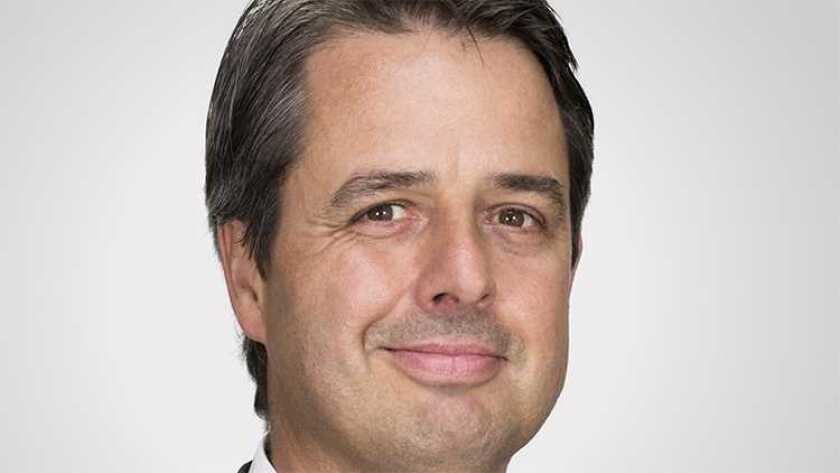When Exa Infrastructure launched, in September, expectations were high – to say the least. As the world saw it, the ongoing question of what would become of GTT and its infrastructure had finally been answered, and rising from its ashes was a new entity backed by none other than I Squared Capital (ISQ), owner of HGC.
First announced in late 2020, the deal brought no shortage of drama. Once it had closed, the pressure was on for Exa. It was initially expected that ISQ would merge its new infrastructure with that of the Hong Kong-based HGC, but that option was ruled out a year before the ink dried on the final deal. Instead, within a month of launch Exa had upgraded two-thirds of its newly acquired network to offer speeds of up to 400Gbps, including the former Interoute network stretching from Chicago and Toronto in the west to Bucharest and Sofia in the east.
It landed a deal with Ireland’s Enet, for data centre connectivity between Europe and North America. And when the IONIAN subsea system launched, Exa was named as the key landing and terrestrial services partner in Italy, and anchor tenant.
Just this week news broke of how Exa will continue this system into Greece with a transmission network connecting the IONIAN landing point to Athens and Thessaloniki. Last week it was the joint venture with TAP to monetise the fibre assets running along the Trans Adriatic Pipeline and extend the route from Marseille to Istanbul.
“In the main, year one aligns reasonably well with our expectations,” says Martijn Blanken, who was officially named CEO the day after the US$2.1 billion GTT deal completed.
“There are always surprises that you were not expecting – but in a way you are always expecting surprises, you just don’t know which ones,” he jokes.
Among these were some “administrative surprises”, although Blanken is quick to say that these weren’t as interesting as one would expect in such a situation. One other surprise was the response from customers.
“I think the experience under GTT, not really investing in the infrastructure, made them a bit gun-shy. They liked our story, but they told us that seeing is believing. Now that we have started to actually allocate capital to network expansions, in line with their demands, we start to see the confidence on their side build up relatively quickly,” he says.
The goal is to become “the undisputed leader” in Europe and transatlantic data centre to data centre connectivity, and the capacity additions are only one part of the network strategy; the other is to “add new legs to our network, if you will”, Blanken says.
“Our aim is quite simple – we want to connect most of the workloads in Europe,” he says. “That means that most important data centres, from a workload perspective – as well as the vast majority of the cable landing stations – should be added to our network. Both existing and new ones.”
In this, Exa is following the crowd in Europe, where it sees demand proliferating to the south, east and “a little bit north” of the traditional FLAP-D markets. Don’t be fooled – these are still alive and well. In fact, figures published by Turner & Townsend in March peg their pipeline at 810MW, but shifting cloud and workload distribution are giving the rest of Europe a look-in.
“You need to invest in those networks,” Blanken says.
Proving the point, a two-year, Europe-wide overpull upgrade is under way. It began in Spain at the start of the year and includes the development of new data centres in Barcelona, as well as new subsea cables into the city.
“In Spain in particular we have committed to build an overland connection from Bilbao to Barcelona and add that to our network, as well as invest quite substantially in a metro network in Barcelona,” Blanken says.
Team building
As vital as it is to the business, the network is only half the job. Inheriting more than 400 staff members from GTT, Exa’s employees made their way there via numerous routes, including Hibernia Networks and KPN International.
“Even though the brand has changed a few times, from a people perspective there has been consistency throughout. That, I think, is important,” Blanken says.
But there are also a number of new faces, and although Exa’s leadership board has a feel of getting the band back together, not all the new recruits are telecoms people.
Telia Carrier’s COO, Andrew Haynes, has taken on the role of SVP of product and technology, while Telstra’s Nick Collins is the new chief commercial officer. However, the CFO role went to Adeel Ahmad, who moved over from the pharmaceuticals industry, while General Electric’s Carrie Cushing has taken on the role of chief people officer.
“Long story short, when I recruit I very much look into how an individual complements the rest of the team that is in place,” says Blanken.
“We are spending quite a bit of time, effort and money with an external party to build the strongest possible executive team dynamic. That means we are investing a lot in ourselves as well through self-assessments and team assessments. There is a lot of work going into building the strongest possible team, where people understand from each other where their strengths are – but also where their weaknesses are and how other team members can potentially complement them,” he adds.
The cultural challenges Blanken faces in this don’t follow the rule book. Following the acquisition spree that went too far, GTT CEO Rick Calder left in June 2020 – the last time GTT filed any financial results. It was delisted from the New York Stock Exchange as a result and went into Chapter 11 bankruptcy protection before evolving into an asset-light service provider with a tier one backbone and SD-WAN offering.
“We are trying to keep the good things from the GTT culture and add some dimensions to it that we thought were lacking. One is the mindset of abundance,” says Blanken. “As you can tell, it’s a little new, but we are getting there.
“The people who came over from GTT have been operating in a mindset of constraint for many, many years. There was just no money to spend on networks and now there is an abundance of money,” he adds.
Proof in the pudding
However, as Blanken sees it, many companies – and their people – remain constrained, lacking either the money or ideas to execute on their strategies. While he doesn’t say it, the situation he describes certainly sounds like the old GTT and the wider impression is that services and infrastructure should be viewed as church and state.
“Having worked in integrated, listed telcos all my life, I have become even more convinced now, eight months into this role, that the real future for the wholesale carrier community will lie in specialised players,” he explains.
“I am convinced that we will see a further consolidation of the market, not just in Europe but in North America. More and more people will start to realise that this is a game that is played by specialists and not generalists and we are happy to be in the position we are in.”
This year marks Exa’s first International Telecoms Week – although many of its leadership team attended in their previous roles – and for Blanken it’s a chance to cement the past eight months and move forward. The week before ITW, Exa confirmed its capex spend to date tops €190 million with a further €150 million due to be committed before September.
“I’m hoping that both the customers and the suppliers we have met with will have the impression that we are putting our money where our mouth was. That we have moved on from being a great story to a great use case and that we have progressed substantially on that journey,” Blanken says.
“There is never an end point, you can’t put a line in the sand and say we have passed the finish line. But when we launched Exa in September, we had a story to tell, and when we leave ITW we can substantiate that story with real tangible investments and customer interactions.”





